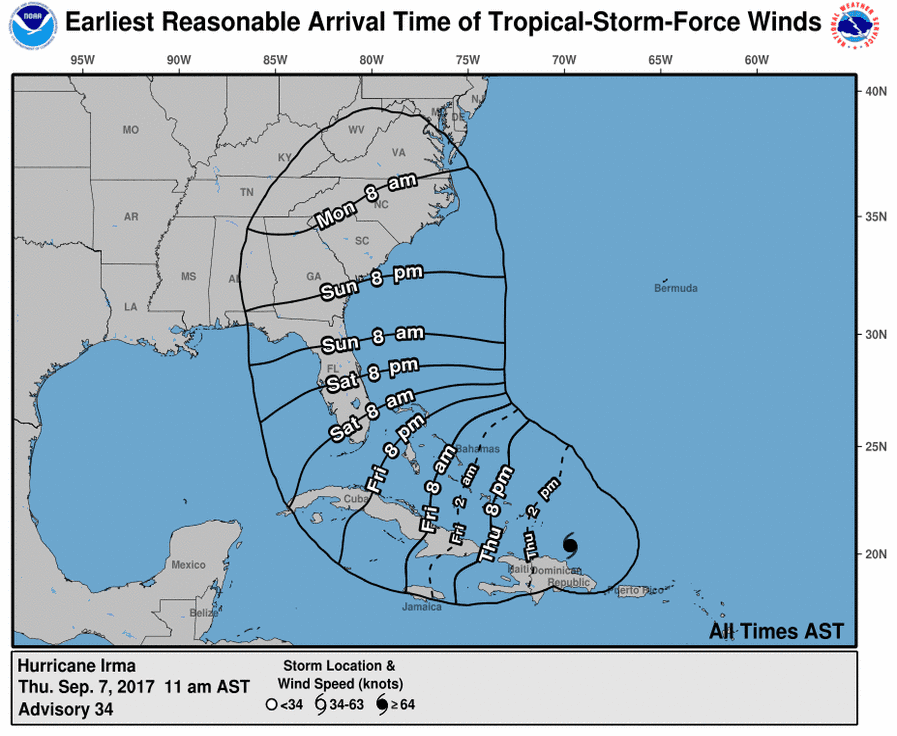Florida’s Miami-Dade County—covering Miami, Miami Beach, and much of southeast Florida—has issued evacuation orders for over 150,000 residents.
The order took effect Thursday morning and calls on residents to find higher ground as Hurricane Irma rips its way up the Caribbean towards Florida. The order covers the county’s barrier islands and the entire southeastern coastline of Florida.
Irma is currently battering the Dominican Republic and is predicted to continue on to through the Bahamas and turn slightly north to begin its assault on Florida sometime overnight between Friday night and early Saturday morning.

The latest update of Hurricane Irma's projected path from the National Hurricane Centre shows it hitting Florida between Friday night and Saturday morning National Hurricane Centre





